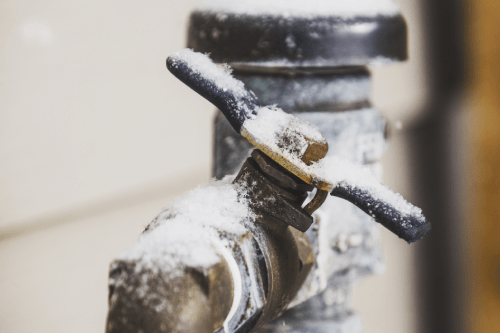Preventing Frozen Pipes: Top Methods for Winter
Preventing Frozen Pipes: Top Methods for Winter
Blog Article
What are your thoughts about How to Prevent Your Pipes From Freezing?

Cold weather can ruin your plumbing, particularly by freezing pipes. Right here's exactly how to stop it from taking place and what to do if it does.
Intro
As temperature levels decrease, the danger of frozen pipes increases, possibly leading to costly repair work and water damage. Recognizing just how to prevent icy pipes is crucial for house owners in chilly environments.
Comprehending Frozen Pipes
What triggers pipelines to freeze?
Pipelines ice up when subjected to temperature levels listed below 32 ° F (0 ° C) for prolonged durations. As water inside the pipelines ices up, it expands, putting pressure on the pipe walls and possibly causing them to break.
Risks and problems
Icy pipes can result in water supply interruptions, residential or commercial property damage, and costly fixings. Burst pipelines can flooding homes and create extensive architectural damages.
Indicators of Frozen Pipes
Recognizing icy pipelines early can prevent them from rupturing.
Exactly how to recognize frozen pipes
Search for decreased water circulation from taps, unusual odors or sounds from pipelines, and visible frost on revealed pipelines.
Prevention Tips
Insulating vulnerable pipes
Wrap pipes in insulation sleeves or utilize warmth tape to shield them from freezing temperatures. Concentrate on pipelines in unheated or outside areas of the home.
Home heating methods
Maintain indoor spaces adequately warmed, especially areas with pipes. Open cupboard doors to permit warm air to flow around pipelines under sinks.
Safeguarding Outdoor Pipes
Yard hose pipes and outdoor taps
Detach and drain pipes garden tubes before wintertime. Mount frost-proof faucets or cover outside taps with insulated caps.
What to Do If Your Pipes Freeze
Immediate actions to take
If you think frozen pipelines, maintain taps open up to relieve pressure as the ice melts. Utilize a hairdryer or towels taken in warm water to thaw pipelines gradually.
Long-Term Solutions
Structural adjustments
Think about rerouting pipes far from outside wall surfaces or unheated locations. Add additional insulation to attics, cellars, and crawl spaces.
Updating insulation
Purchase top quality insulation for pipelines, attics, and walls. Proper insulation assists preserve constant temperature levels and minimizes the threat of frozen pipes.
Verdict
Avoiding icy pipes requires proactive procedures and quick actions. By comprehending the reasons, indications, and safety nets, home owners can shield their plumbing throughout cold weather.
5 Ways to Prevent Frozen Pipes
Drain Outdoor Faucets and Disconnect Hoses
First, close the shut-off valve that controls the flow of water in the pipe to your outdoor faucet. Then, head outside to disconnect and drain your hose and open the outdoor faucet to allow the water to completely drain out of the line. Turn off the faucet when done. Finally, head back to the shut-off valve and drain the remaining water inside the pipe into a bucket or container. Additionally, if you have a home irrigation system, you should consider hiring an expert to clear the system of water each year.
Insulate Pipes
One of the best and most cost-effective methods for preventing frozen water pipes is to wrap your pipes with insulation. This is especially important for areas in your home that aren’t exposed to heat, such as an attic. We suggest using foam sleeves, which can typically be found at your local hardware store.
Keep Heat Running at 65
Your pipes are located inside your walls, and the temperature there is much colder than the rest of the house. To prevent your pipes from freezing, The Insurance Information Institute suggests that you keep your home heated to at least 65 degrees, even when traveling. You may want to invest in smart devices that can keep an eye on the temperature in your home while you’re away.
Leave Water Dripping
Moving water — even a small trickle — can prevent ice from forming inside your pipes. When freezing temps are imminent, start a drip of water from all faucets that serve exposed pipes. Leaving a few faucets running will also help relieve pressure inside the pipes and help prevent a rupture if the water inside freezes.
Open Cupboard Doors
Warm your kitchen and bathroom pipes by opening cupboards and vanities. You should also leave your interior doors ajar to help warm air circulate evenly throughout your home.

Do you enjoy more info about Helpful Tips to Prevent Frozen Pipes this Winter? Put a remark below. We'd be pleased to know your suggestions about this posting. Hoping to see you back again soon. Are you aware of somebody else who is excited by the subject? Feel free to promote it. Kudos for being here. Kindly visit our site back soon.
Website Report this page